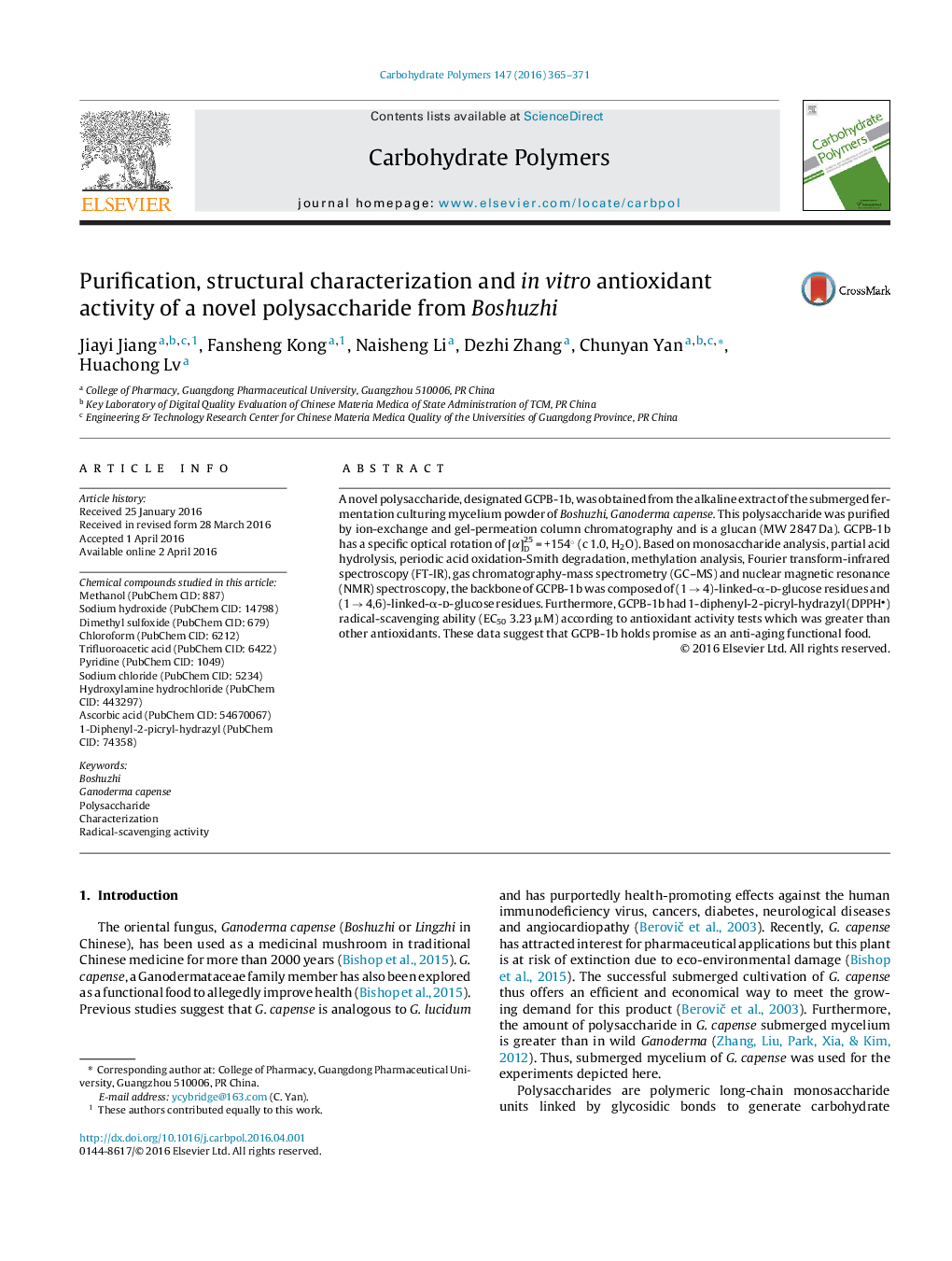| Article ID | Journal | Published Year | Pages | File Type |
|---|---|---|---|---|
| 1383107 | Carbohydrate Polymers | 2016 | 7 Pages |
•A novel polysaccharide (GCPB-1b) was isolated from Boshuzhi, Ganoderma capense.•The structural characterization of GCPB-1b was studied and confirmed.•The polysaccharide GCPB-1b had good DPPH radical-scavenging capacity.•GCPB-1b isolated from Ganoderma capense is a promising antioxidant.
A novel polysaccharide, designated GCPB-1b, was obtained from the alkaline extract of the submerged fermentation culturing mycelium powder of Boshuzhi, Ganoderma capense. This polysaccharide was purified by ion-exchange and gel-permeation column chromatography and is a glucan (MW 2847 Da). GCPB-1b has a specific optical rotation of [α]D25 = +154° (c 1.0, H2O). Based on monosaccharide analysis, partial acid hydrolysis, periodic acid oxidation-Smith degradation, methylation analysis, Fourier transform-infrared spectroscopy (FT-IR), gas chromatography-mass spectrometry (GC–MS) and nuclear magnetic resonance (NMR) spectroscopy, the backbone of GCPB-1b was composed of (1 → 4)-linked-α-d-glucose residues and (1 → 4,6)-linked-α-d-glucose residues. Furthermore, GCPB-1b had 1-diphenyl-2-picryl-hydrazyl (DPPH) radical-scavenging ability (EC50 3.23 μM) according to antioxidant activity tests which was greater than other antioxidants. These data suggest that GCPB-1b holds promise as an anti-aging functional food.
